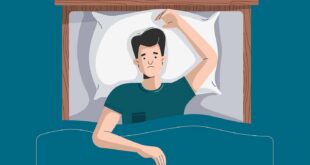POST TRAUMATIC STRESS DISORDER FROM ANXIETY.
The essential feature of this disorder “is the development of characteristic symptoms following a psychologically distressing event that is outside the range of usual human experience” (APA, 1987).
The characteristic symptoms involve reexperiencing the traumatic event; numbing of responsiveness to, or reduced involvement with, the external world; and a variety of autonomic,
dysphoric, or cognitive symptoms.
Symptoms of depression and anxiety are common, (APA, 1987).
The most common traumatic stressors involve serious threat to one’s life, physical well-being, significant others, or property.
The trauma may be directly experienced or observed, occur alone, or with others.
The specific criteria, condensed from DSM-III-R (APA, 1987) can be seen in Table 3.4.
Post-Traumatic Stress Disorder:
A. The person has been exposed to a traumatic situation.
B. The traumatic event is persistently reexperienced in at least one of these ways:
(1) recurrent and intrusive recollections,
(2) recurrent and distressing dreams of the event,
(3) sudden acting or feeling as if the traumatic event were recurring,
(4) intense psychological distress at exposure to events that resemble the traumatic event,
C. Persistent avoidance of stimuli associated with the trauma, or general numbing of responsiveness as indicated by at least three of the following:
(1) efforts to avoid thoughts, or feelings associated with the trauma,
(2) efforts to avoid activities or situations that arouse recollections of the trauma,
(3) inability to recall an important aspect of the trauma,
(4) marked diminished interest in significant activities,
(5) feeling of detachment or estrangement from others,
(6) restricted range of affect,
(7) sense of foreshortened future,
D. Persistent symptoms of increased arousal (not present before the trauma), as indicated by at
least two of the following:
(1) difficulty falling or staying asleep,
(2) irritability or outbursts of anger,
(3) difficulty concentrating,
(4) hypervigilance,
(5) exaggerated startle response,
(6) physiologic reactivity upon exposure to events that symbolize or resemble an aspect of the trauma,
 Therapy for anxiety Therapy for anxiety
Therapy for anxiety Therapy for anxiety



